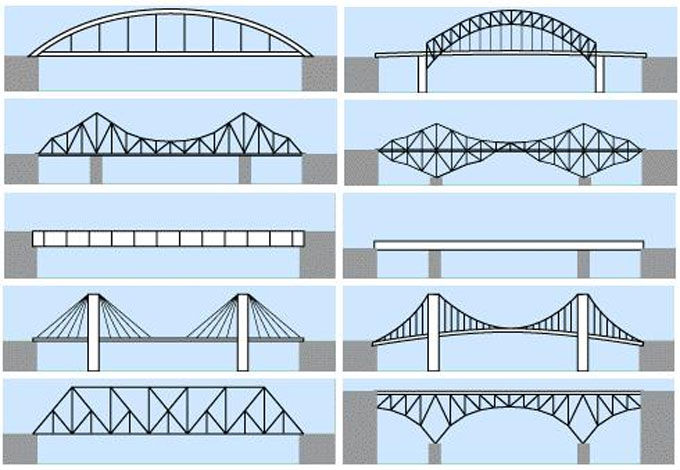
Types of Bridges based on Span
In transportation engineering, there are several types of bridges. The bridge should be sufficiently rigid to combat movement. The purpose of each member of the bridge is to defy the load enforcing or moving upon it.
Categorization of the Bridges are done on the following basis:
1. The flexibility of the structure
2. Inter-span
3. superstructure
4. The length of the span as culvert
5. Based on utility
6. Based on the high flood level
Based on to the Flexibility of the Structure:
1: Fixed span bridge:
a. Fixed bridges do not contain moving parts and remain stagnant in one place unless they collapse or get demolished.
b. They are designed to remain where they are constructed to the point they are unsuitable or demolished.
2: Movable span bridge:
a. The movable bridge is supported with moveable decks and operated through electricity.
b. The superstructure of the bridge is shifted or raised through a appropriate arrangement.
Based on Inter-Span:
1: Simply supported: Under simply supported bridge, the width of the bridge is segregated into several individual spans.
For every span in the simply supported bridge, the member load is supported at both ends. These types of bridge are constructed with plate and truss and girder.
2: Continuous bridge: The spans are continuous over the two or more rather more two supports.
In continuous, the stresses are minimized because of the negative bending moments found at the piers and abutments. Under this type of bridge, the bending moment in the span remains lower than the simply supported bridge.
3: Cantilever bridge: Cantilever bridge is only supported at one end and another end remains free to space. Normally, two cantilever portions are attached to provide the space for vehicles and human.
Based on Superstructure:
1: Suspension Bridge: It is very exorbitant type of bridge and very rigid and it is expanded over long distance like across river. The prime component is suspension cables which are extended over two towers and are connected at each end to another deep in the ground. It is extended over 500 m up to 1400 m. Vertical smaller suspension cables are connected with main cables to support the deck underneath.
2: Beam Bridges: These are the oldest and simplest type of bridge consisting of vertical piers and horizontal beam. It is suitable for an only short span but can be used for larger crossing by adding the additional piers. Beam bridges are easy to built and inexpensive than other bridge types but they have a limited span.
3: Truss bridge: It is made of assembly of triangles and normally constructed with a series of straight steel bars. Simply supported the span up to 30 to 375 m. In cantilever, extended up to 550 m. Rigid arms are stretched from both sides of the two piers. Diagonal steel tubes are arranged from the top and bottom of each pier to retain the arms in the place similar to a strong diving board known as cantilever arms. Truss bridge contains great strength and resists heavy loads.
4: Arch bridge: Under this bridge, the horizontal thrust is formed. An arch bridge is supported by the abutments at each end of the bridge. For masonry, span up to 3 to 15 m. Steel, span up to 519 m. Concrete, span up to 305 m.


